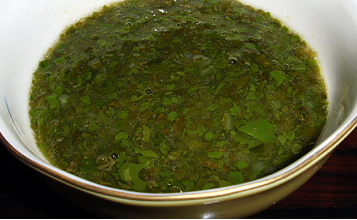宗像の海の幸
更新日:2021年12月23日
鐘崎天然とらふく
宗像市の鐘崎漁港は、質の良い「 鐘崎天然とらふく」の水揚げ県内第1位を誇っており下関の南風泊市場で取り扱われる(外海物)天然トラフグの約3割を実は鐘崎産が占めます。鐘崎で獲れた鐘崎天然とらふくの価値を高め全国へ広めようと発案されたのが、鐘崎ブランド「鐘崎天然とらふく」です。玄界灘や響灘の荒波にもまれ、身が引き締まっている分、市場に出回る中でも「最高級のふぐ」と位置付けられています。しっかり締まった身の歯ごたえや、甘みと風味は特筆すべきものがあります。きめが細かくつややかな「鐘崎天然とらふく」は、旬を迎える12月から3月に掛けて味わうことが出来ます。シーズンには、もっと多くの方にリーズナブルに鐘崎天然とらふくを味わってもらおうと、地元の各宿泊施設等で「鐘崎天然とらふくフェア」などのイベントやフェアが行われております。

玄界灘の荒波にもまれた、「鐘崎天然とらふく」の身はきめ細かく 艶やか

地元の旅館やホテルでは、「鐘崎天然とらふく」をリーズナブルに 味わうことができる
玄ちゃんアジ
豊富な海の幸に恵まれた宗像のブランド魚『玄ちゃんアジ』は、平成14年「玄ちゃん」の名で商標登録されました。「玄ちゃんアジ」は、鐘崎漁協の「釣アジ船団所属」の一本釣り漁業者が、同漁港沖合の玄界灘で釣り上げた瀬付きの「マアジ」で、サイズは26センチメートル以上のものでなければなりません。さらに魚の鮮度を保つために、料理人の手に渡るまでは絶対に手で触れてはならないいうルールを厳格に守っています。そのために、釣アジ船団の漁師たちは全員「玄ちゃんアジ」に手を触れずに針から魚を外すテクニックを習得しております。 「玄ちゃんアジ」の特徴は、玄界灘の荒波に揉まれているため身の締まっていて脂のりが抜群に良く、通常の「アジ」という魚の評価を覆す逸品です。

玄ちゃんアジは、その鮮度を保つために、調理人の手に渡るまでは人の手に触れられることがないよう徹底して管理されている

宗像の旅館で出されている玄ちゃんアジの造りの一例。通常のアジよりも大ぶりで脂ののりも抜群に良い
活きイカ
「活きイカ」は、鐘崎漁港の沖合約60キロにある「沖ノ島」近海で鐘崎のイカ船団が釣り上げてきた活きイカです。透き通った身の美しさ、口に入れた時のコリコリッとした食感は絶妙で、甘くとろりとした味わいが特徴。一年を通じて食べられますが夏から秋にかけての活きイカは特に美味しくいただけます。また、最近では「いか鮮魚パック」で、イカを生かしたまま皆様のご自宅やお店へとお届けできるようになりました。 人工海水と酸素を特殊な袋に入れ、生きたままのイカを泳がせパックし約24時間生きた状態を保つことができるパックです。

透き通った見た目にも美しいイカ刺しは甘くて程よくコリコリ した食感。

「活きイカパック」の発送や販売についての詳細は鐘崎漁協へと お問合せください。
活魚料理が味わえるお店を探す(宗像漁協ホームページ/外部サイトにリンクします)
「わかめ」「めかぶ」「あかもく」などの海草類
宗像では、玄界灘の荒波にもまれた良質の天然わかめが豊富に採れます。地の島のわかめはその質の良さから宗像大社を通じて皇室に「献上」されています。天然わかめの根元である「めかぶ」はミネラル、ビタミンフコイダンが豊富に含まれています。採れたての「めかぶ」をゆがき細かくたたいてポン酢で食べると格別な美味しさをあじわえます。
また、「あかもく」は日本海の海女(あま)の道では、昔からこの呼び名で親しまれてきた健康食。あかもくのネバネバ成分のフコイダンが健康・美容、ガン予防・免疫力の向上・コレステロール値低下などに効果が期待できるとされ、現在は道の駅むなかたなどで商品化して売られています。

天然わかめの根元をゆがき、細かくたたいて食べる「めかぶ」は3月ごろが 一番柔らかくて旬とされています

「あかもく」はパッケージ化されて、道の駅むなかたなどで冷凍して 売られている
Tiger Puffer Fish
Kanezaki Fishing Port in Munakata lands the most tiger puffer fish (torafugu) in Fukuoka. The rough seas off the coast of Munakata are believed to foster the growth of strong, firm-fleshed puffer fish.
Tiger puffer fish are considered a delicacy in Japan. Known simply as “fugu,” this fish is renowned for its delicate flavor and firm texture. Tiger puffer fish contain a potent neurotoxin, concentrated in the liver and ovaries, and chefs need a special license to prepare the fish. The special preparation makes fugu an expensive dish.
Puffer fish is commonly eaten raw as paper-thin sashimi, arranged on a plate to resemble a chrysanthemum flower. A hotpot with tofu and vegetables (tecchiri) is a popular way to enjoy the fish in Munakata. Winter is the peak season for tiger puffer fish. As protection from the cold, the fish gain a layer of fat, which gives the flesh a richer flavor. From February to March, restaurants across Munakata celebrate the catch, offering tiger puffer fish dishes at reduced prices.
Conger Eels
Conger eels (anago) are common in the waters off the Munakata coast. The area yields the highest volume of conger eels (anago) in Fukuoka, and most of the catch is landed at the port of Kanezaki. The eels thrive in the warm waters of the Tsushima Current, which flows north past Munakata, along the west coast of the Japanese archipelago. Rich phytoplankton blooms thrive in the warm water, bringing with them small fish, shrimp, and crabs that migrate with the current. Conger eels feed on these small marine creatures.
The eels are caught in long tube traps (about 1.5 meters long) partially submerged on the seabed where they feed. Each trap can hold five or six full-sized eels, each up to a meter long. Undersized eels are able to escape through holes, so only the more mature eels are caught. The eels are kept alive in tanks until they are ready to be sold.
The main variety caught around Munakata is the whitespotted conger (Conger myriaster). It is smaller than a freshwater eel, with smooth brown skin and a line of white spots along each side of the body. The eels develop firm flesh by swimming against the strong currents off the coast of Munakata.
The fishing season for whitespotted conger eels runs from May to November. From late July to the end of September, restaurants in Munakata serve conger eel as sashimi, tempura or as grilled eel fillets. Conger eel–flavored rice crackers are widely available at souvenir shops in the area.
(This English-language text was created by the Japan Tourism Agency.)





